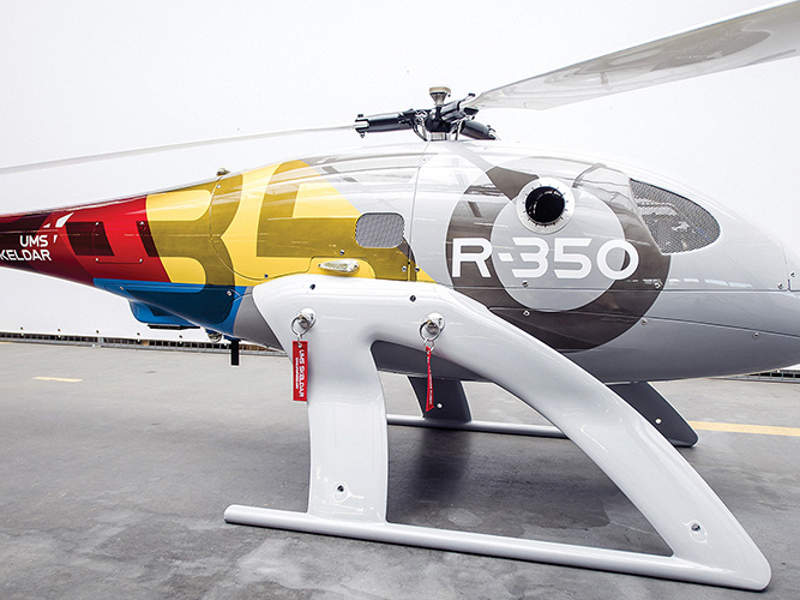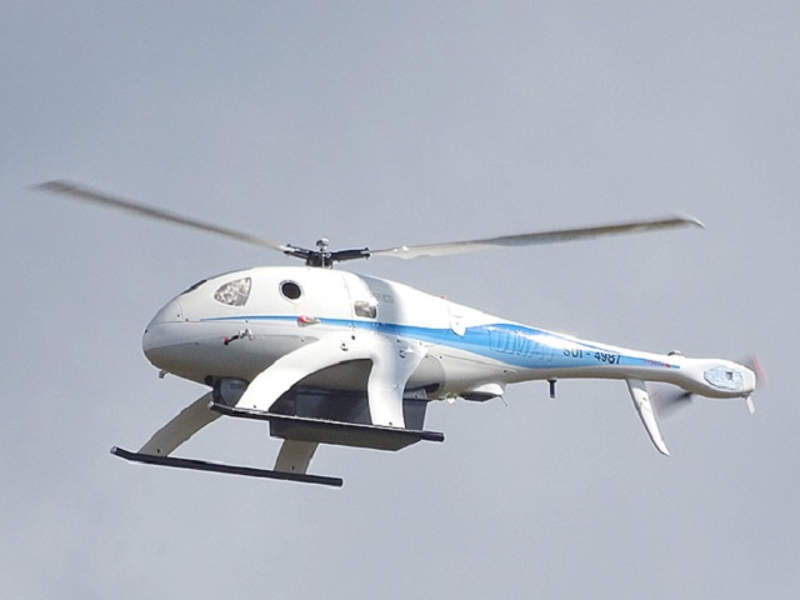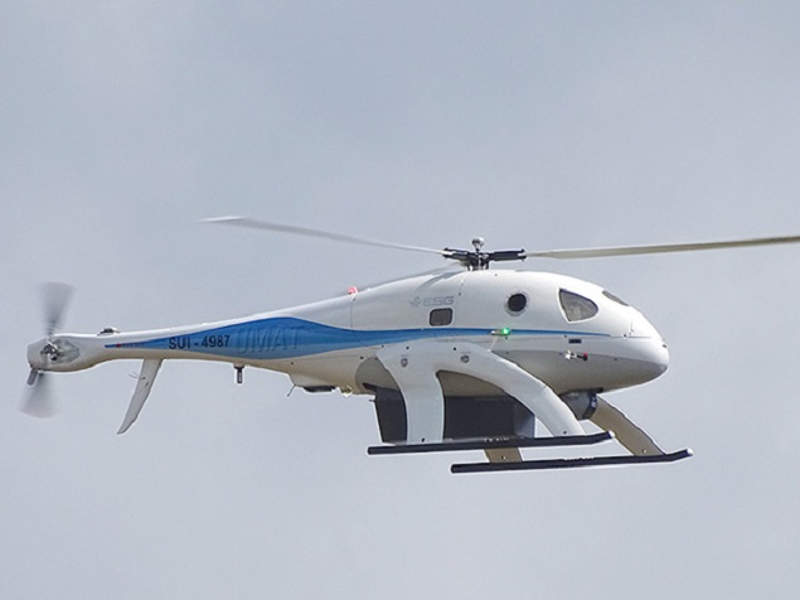R-350 is a new vertical take-off and landing (VTOL) unmanned aerial vehicle (UAV) developed by UMS SKELDAR, a joint venture of UMS AERO and Saab. The aircraft is intended for military and civil applications.
Unveiled at Dubai Airshow in November 2017, the UAV can be deployed in a range of missions such as intelligence, surveillance, target acquisition and reconnaissance (ISTAR), military logistics, cargo delivery, medical supply, boarder and coastal patrol, emergency response, and fire monitoring.
UMS SKELDAR successfully demonstrated the capabilities of a modified R-350 VOL UAV installed with specialised payloads for The Federal Office of Bundeswehr Equipment, Information Technology and In-Service Support (BAAINBw) in November 2017.
Flight tests of the UAV were carried out at Bundeswehr Technical Centre for Aircraft and Aeronautical Equipment (WTD 61) in Manching, Germany.
R-350 VTOL UAV design and features
The R-350 integrates a state-of-the-art modular design offering a short turnaround time and built-in test (BIT) functionality. The platform is free from The International Traffic in Arms Regulations (ITAR) and can be easily certified for all air space classifications.
The compact and sleek design reduces the probability of detection by hostile forces, while its small logistical footprint further ensures operations in confined spaces.
The UAV is equipped with a simple propulsion unit, which can be swapped in less than 45 minutes, while its jet turbine can be replaced in less than 15 minutes. The major subsystems and components of the vehicle are designed to be rapidly interchanged to ensure easy maintenance.
The UAV has a length of 3.20m, width of 0.99m, height of 1.15m and a rotor diameter of 3.50m.
The standard package of the R-350 system includes two UAVs, avionics, a ground control station, an integrated air data terminal, a data link, an integrated autopilot, flight management software, a training package and an operations and maintenance manual.
The maximum take-off weight (MTOW) of the UAV is 150kg.
Payload aboard R-350 UAV
The UAV has a payload capacity of up to 42kg, of which 12kg is housed in the nose section, while the main payload bay can accommodate 30kg of payload. The unmanned aircraft can simultaneously carry multiple payloads including stabilised electro optical/infrared (EO/IR) gimbals, synthetic aperture radar (SAR), an automatic identification system (AIS), and a laser imaging detection and ranging (LIDAR) device or a chemical sniffer.
The EO/IR cameras aboard the UAV offer wide-area situational awareness of stationary and moving objects of interest. They also relay real-time, high-definition video during the day and night. The SAR enables the operators to conduct all-weather ground mapping and ground moving target indication (GMTI).
The remotely piloted vehicle can be integrated with signals intelligence (SIGINT), electronic intelligence (ELINT) and communications intelligence (COMINT) payloads as well as hyperspectral and multi-spectral sensors.
It also carries an optional vertical parachute rescue system (VPRS).
Ground control system
The UAV is controlled by a mobile remote pilot station (RPS) equipped with operator consoles. The RPS can also be used to operate the R-350 and V-200 UAVs offered by UMS SKELDAR.
Engine and performance
The R-350 UAV is powered by a jet-turbine engine propulsion system burning Jet A1 and JP8 heavy fuels. The power-plant allows the UAV to fly at a maximum speed of 120km/h.
The unmanned aircraft has a maximum data link range of 80km and can reach a maximum altitude of 2,500m. It offers a maximum endurance of more than two hours based on the fuel tank module and payload configuration.
The Global Unmanned Aerial Vehicles (UAV) Market 2011-2021
This project forms part of our recent analysis and forecasts of the global unmanned aerial vehicles (UAV) market available from our business information platform Strategic Defence Intelligence. For more information click here or contact us: EMEA: +44 20 7936 6783; Americas: +1 415 439 4914; Asia Pacific: +61 2 9947 9709 or via email.







